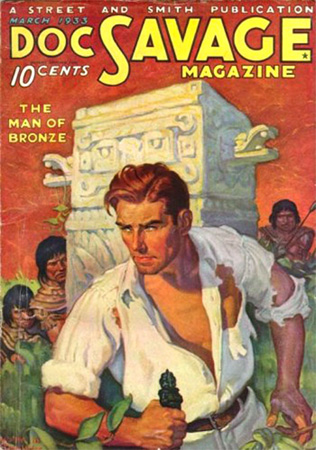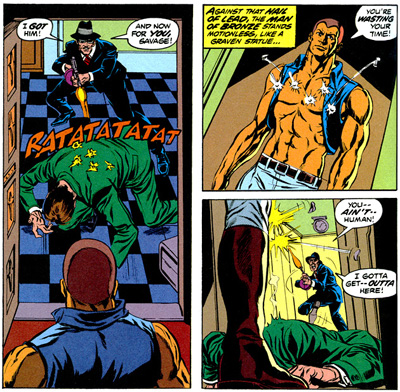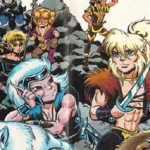
Doc Savage is one of the original giants of fiction. Created in the 1930s during the pulp magazine golden age, Doc had an enormous influence on subsequent generations of larger-than-life heroes. His popularity has waned over the years in comparison to Buck Rogers, Flash Gordon, and Tarzan, but his contribution lives on. Indiana Jones, Batman, Superman, James Bond, Buckaroo Bonzai, Iron Man… the list of characters that borrow from Doc goes on, and will make me go over my word count if I don’t shut up about it and move on to my point, which is this:
Clark Savage Jr., commonly known as Doc Savage, was raised by his wealthy father to be a true benefactor to all mankind. His father made sure he got the best education and the most advanced scientific training and learned to put it all to a just cause. Doc is the perfect physical specimen, and could outdo any number of Olympians in their own sport. He is also a genius intellect, being the world’s top surgeon, scientist, and engineer in many fields. Add to that his family’s untold riches, and you have the perfect champion for a world suffering through the Great Depression and World War II. Also, Doc’s five companions (all top in their respective fields, second only, of course to Doc) usually pitch in their own specialties, getting the gang out of scrapes at just the right moment.
You can get reprints of the original stories from the book store or order them online. I recommend starting with The Man of Bronze and The Land of Terror (the original books were short enough that you’ll get two or three stories in the reprints). The Man of Bronze serves as an origin story, and will get you into the proper frame of mind. The Land of Terror is grizzly and murderous, which is the opposite of normal Doc Savage. These two stories will give you the bookends: Savage at his do-gooder best, and at his murderous worst (I wouldn’t be surprised if The Land of Terror was ghostwritten by a different author). From there I would randomly select a few more reprints.

These were written in the pulp fiction tradition, which means the author, Lester Dent, worked on contract under a pen named owned by the magazine. The stories were cranked out quickly and with a heavy dose of preconceived formulas designed to maximize appeal to the number one consumer of pulp magazines: teenage boys. The result is a quick, efficient narrative style with plenty of plot twists and sappy lectures on how important it is to do the right thing.
After a few more of the reprinted original stories, it’s time move on to radio. NPR did a few episodes in the old radio broadcast style called The Adventures of Doc Savage. This would be a good first foray into Doc Savage outside the original pulp magazine format, especially if you are looking to spice up your commute to work. From there, move into graphic novels. DC Comics, among others, owned the rights for a while. I would suggest Doc Savage and the Silver Pyramid, which takes some license and moves him to the modern era.
Next, it’s time for the 1975 action movie Doc Savage: The Man of Bronze. This was not a very good effort, and it’s probably the reason Doc Savage, unlike Flash Gordon — who had an excellent movie in the ’80s to keep his name alive — is generally unknown outside professional geek circles. Still, it is full of Savage icons, such as his Arctic Fortress of Solitude (yes, Superman is a copycat) and his skyscraper headquarters.
To top it off, it’s time to read Doc Savage: His Apocalyptic Life, by Philip José Farmer. Farmer — of Riverworld fame — is an interesting author on his own. Farmer writes this book as if it were the biography of a real person. If you have made it this far, you will be rewarded for your efforts, not just because the Doc Savage angle is handled so well by Farmer, but also by the fact that Farmer brings in his own interesting and original influence.






